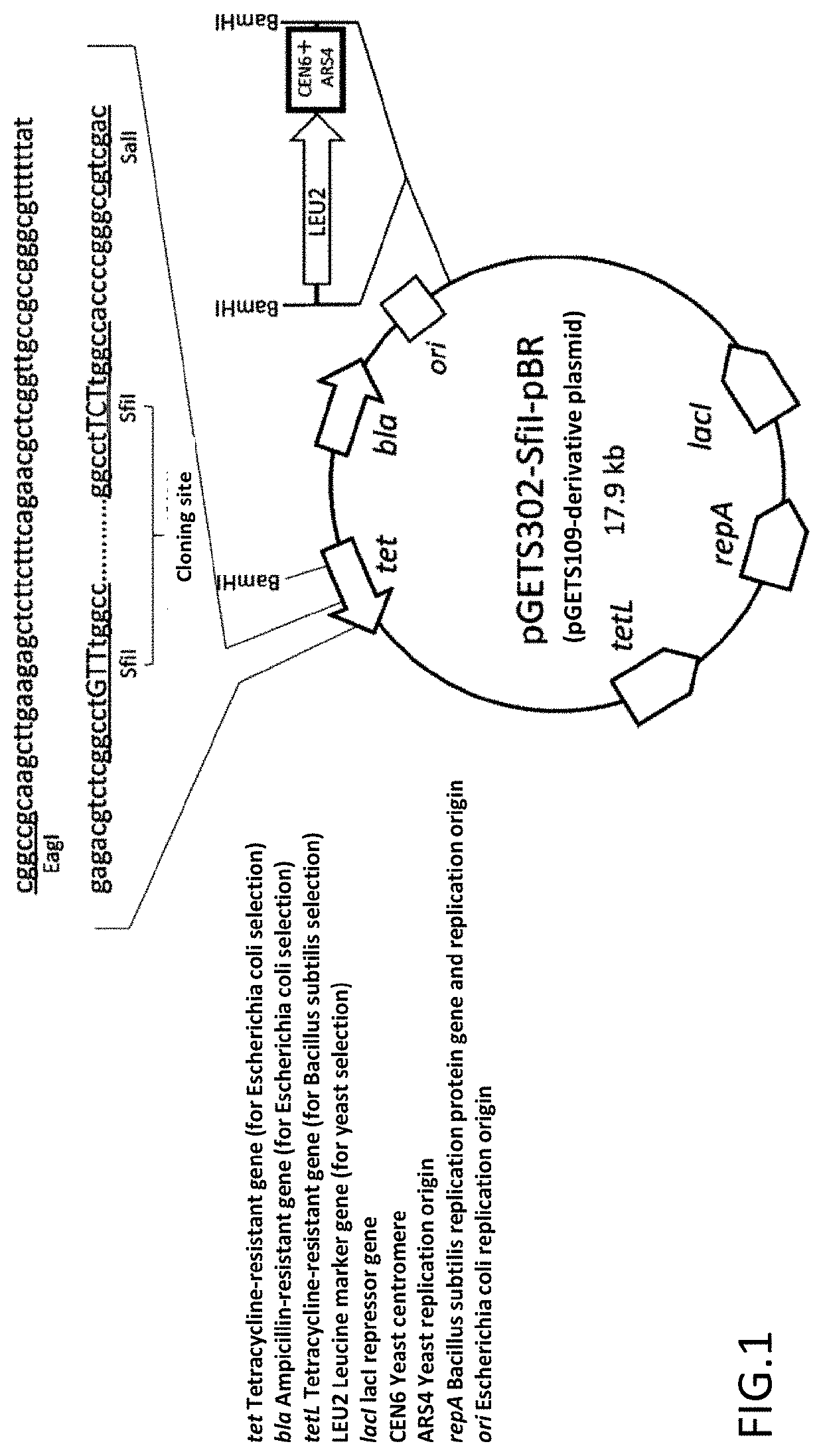Method for constructing chimeric plasmid library
a plasmid library and plasmid technology, applied in the field of new plasmid library construction methods, can solve the problems of difficult to construct a plurality of long-chain dnas, difficult to enlarge the scale, and generally incur costs and time in the synthesis of long-chain dna, so as to achieve the effect of quick and efficient construction of a long-chain dna combinatorial library
- Summary
- Abstract
- Description
- Claims
- Application Information
AI Technical Summary
Benefits of technology
Problems solved by technology
Method used
Image
Examples
examples
[0062]The present invention is specifically described in the following Examples. However, the present invention is not limited by these Examples.
[0063]The common test method or the like such as reagents used in the Examples is as follows.
[0064]RM125 strain (Uozumi, T., et al. Moi. Gen. Genet., 152, 65-69 (1977)) and its derivative strain, BUSY9797 strain, were used as a host of Bacillus subtilis. As a plasmid vector capable of being replicated in Bacillus subtilis, pGET118 (Kaneko, S., et al. Nucleic Acids Res. 31, e112 (2003)) was used. Carbenicillin, which is an antibiotic, was purchased from Wako Pure Chemical Industries. Tetracycline, which is an antibiotic, was purchased from Sigma. SfiI and BspQI, which are restriction enzymes, were purchased from NEB. T4 DNA Ligase was purchased from Takara Bio. Takara Ligation Kit (Mighty) (Takara Bio) was used for common ligation for constructing a plasmid of Escherichia coli. KOD plus polymerase of TOYOBO was used for a PCR reaction for pr...
PUM
| Property | Measurement | Unit |
|---|---|---|
| temperature | aaaaa | aaaaa |
| total volume | aaaaa | aaaaa |
| voltage | aaaaa | aaaaa |
Abstract
Description
Claims
Application Information
 Login to View More
Login to View More - R&D
- Intellectual Property
- Life Sciences
- Materials
- Tech Scout
- Unparalleled Data Quality
- Higher Quality Content
- 60% Fewer Hallucinations
Browse by: Latest US Patents, China's latest patents, Technical Efficacy Thesaurus, Application Domain, Technology Topic, Popular Technical Reports.
© 2025 PatSnap. All rights reserved.Legal|Privacy policy|Modern Slavery Act Transparency Statement|Sitemap|About US| Contact US: help@patsnap.com



